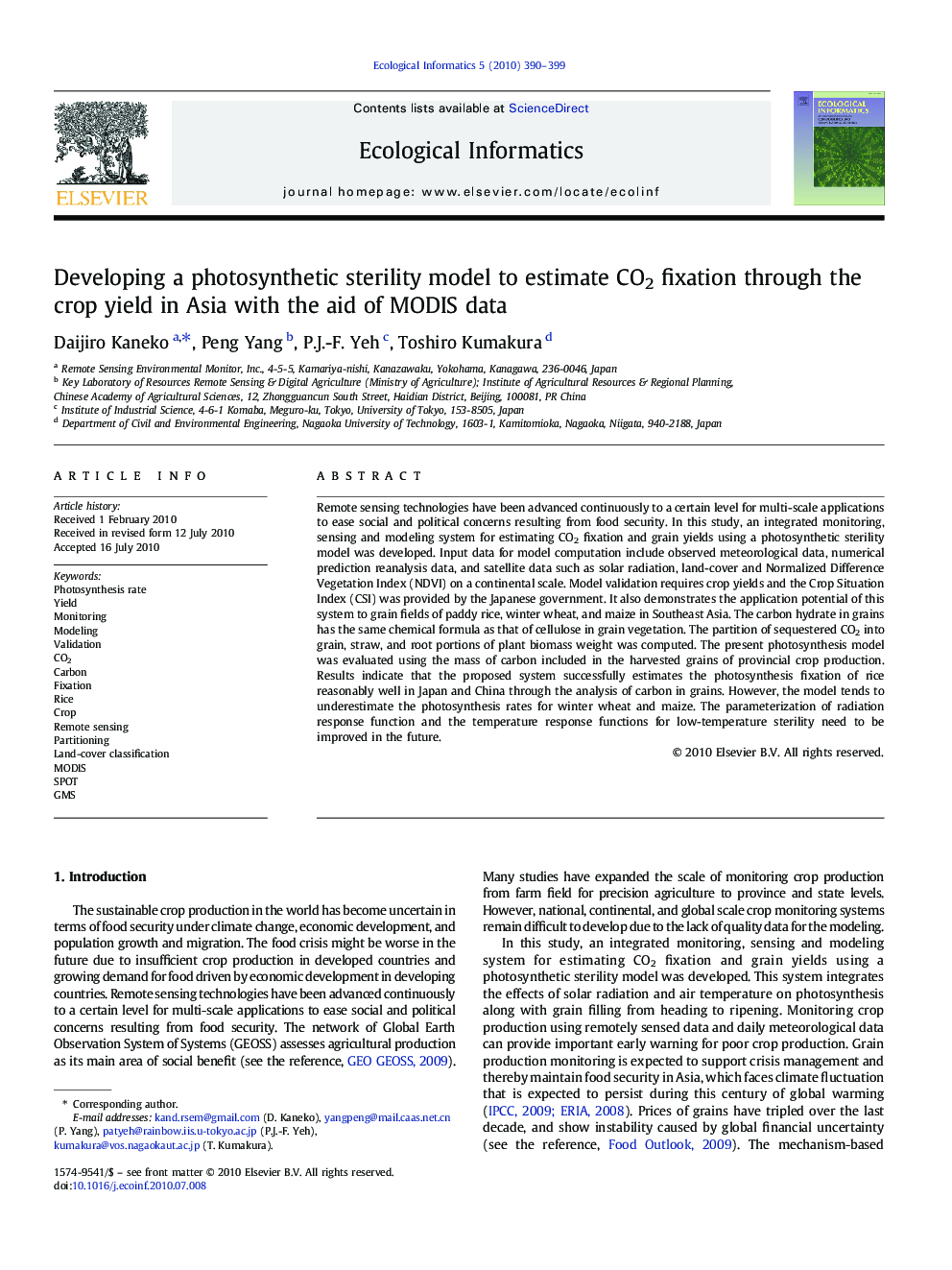| Article ID | Journal | Published Year | Pages | File Type |
|---|---|---|---|---|
| 4375278 | Ecological Informatics | 2010 | 10 Pages |
Remote sensing technologies have been advanced continuously to a certain level for multi-scale applications to ease social and political concerns resulting from food security. In this study, an integrated monitoring, sensing and modeling system for estimating CO2 fixation and grain yields using a photosynthetic sterility model was developed. Input data for model computation include observed meteorological data, numerical prediction reanalysis data, and satellite data such as solar radiation, land-cover and Normalized Difference Vegetation Index (NDVI) on a continental scale. Model validation requires crop yields and the Crop Situation Index (CSI) was provided by the Japanese government. It also demonstrates the application potential of this system to grain fields of paddy rice, winter wheat, and maize in Southeast Asia. The carbon hydrate in grains has the same chemical formula as that of cellulose in grain vegetation. The partition of sequestered CO2 into grain, straw, and root portions of plant biomass weight was computed. The present photosynthesis model was evaluated using the mass of carbon included in the harvested grains of provincial crop production. Results indicate that the proposed system successfully estimates the photosynthesis fixation of rice reasonably well in Japan and China through the analysis of carbon in grains. However, the model tends to underestimate the photosynthesis rates for winter wheat and maize. The parameterization of radiation response function and the temperature response functions for low-temperature sterility need to be improved in the future.
